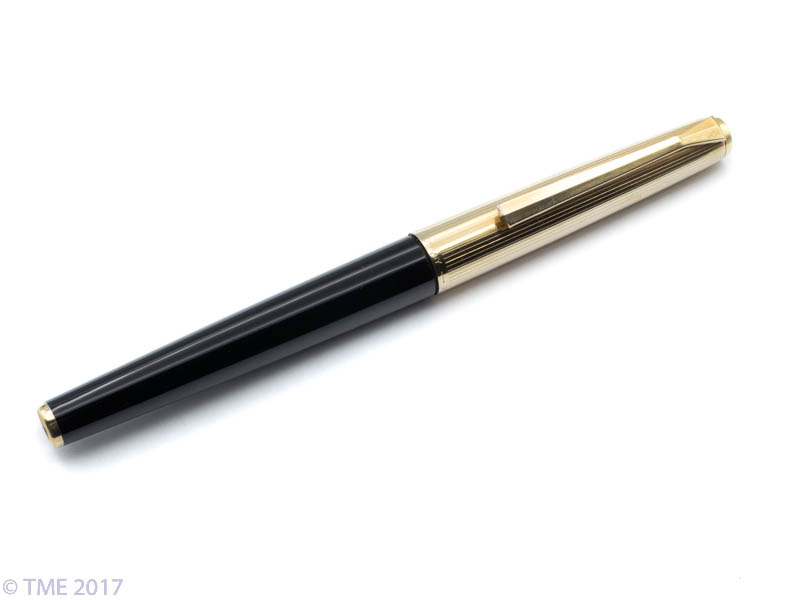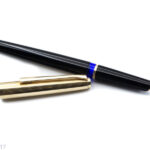Pelikan P30
1965-69
About This Model
Pelikan is one of the oldest fountain pen manufacturers, dating to a Hanover firm that made paint and ink in the 1830s. Its plant manager, chemist Günther Wagner gained control in 1878 and installed the pelikan, his family emblem as Pelikan's hallmark, even growing the number of pelikan chicks in the emblem to match the family's children (although its connection to the family disappeared over time and the number of chicks shrank from four to one). The product line of art inks added iron gall ink for official documents in 1898, and by 1910 this was the best-selling ink in the world. Pelikan entered the fountain pen market with the Model 100 in 1929 after purchasing the patent for a piston-filling pen. The peculiarity of this pen was the differential screw system. Unlike the typically black piston pens that characterized German fountain pens for the next twenty years, Pelikan's green marbled binde and semi-transparent ink window set them apart. After WWII, Pelikan grew steadily, adding the 400 Stresemann in the 1950s, with its green/black or brown/black striped barrel. In addition, a more simple piston was introduced in the 1950s for the 120 and 140 student pens. In the 1970s Pelikan contracted manufacturing out to Merz&Krell for the 120 model, which were slightly different but look much the same. The 1980s brought both the new deluxe pens, the 600 and 800 series, and then the limited edition 1000s, but its overexpansion also brought bankruptcy and a forced sale away from the family. Several reorganizations later, by 1994 all Pelikan production was moved to Peine-Vöhrum, the site of a Pelikan factory, where it is today.
About This Pen
From 1965-69, featured the ‘thermic-regulator’, a patented feed that is built into the gripping section to enable easy nib swapping, and was an early cartridge filler. It is standard size, 13.3cm. The nib is a smooth, Pelikan-wet broad. The pen is made of plastic, with a rolled gold cap.
Price: $48 Sold


